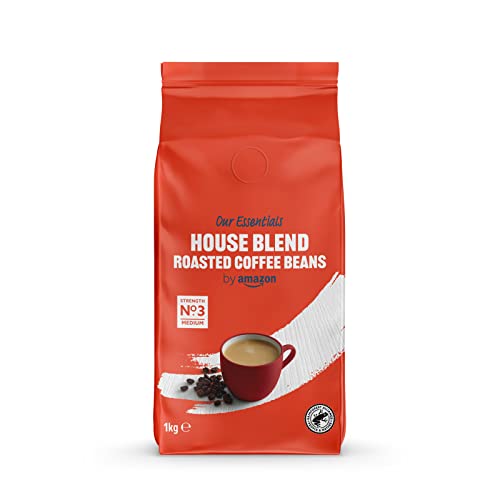Starbucks Coffee Beans 1kg
Starbucks was a cozy coffee shop located in Seattle Washington prior to when it became famous for its Peppermint Mochas and red holiday cups. Starbucks' founders were primarily focused on selling whole beans of coffee but they didn't see the potential of espresso drinks.
Schultz changed everything. He was determined to show off his roasting and mixing skills.
Origin
Before Starbucks coffee beans are in your cup, they have been through a lengthy and winding trek. Coffee is grown almost exclusively in the Coffee Belt. This area is located all over the world between the Tropics Cancer and Capricorn. The flavor of coffee beans is influenced by the climate, soil, and the culture of the region. Starbucks sources its coffee from more than 30 countries around the globe.
Most Starbucks coffees come from three key regions: Latin America, Africa and Asia-Pacific. These regions are renowned for their full-flavor and balance of acidity and body. Starbucks also sources coffee from St. Helena in the South Atlantic Ocean, a volcanic tropical paradise.
The Starbucks's coffee beans are roasted to perfection giving them the perfect flavor and smooth texture. The coffee beans are ground into a fine powder, and ready for brewing. The powder is then mixed with water and poured into a cup to make an exquisite cup of espresso. The result is a cup that is full of flavor and energy.
While most Starbucks coffees are blends of various beans, there are many varieties of single-origin coffees available at the chain's stores. Single-origin Starbucks coffees come with many flavors, including fruity and chocolatey sweet and nuanced. Certain single-origin coffees are certified organic.
Although Starbucks's beans are sourced from all over the world however, they must be able to meet certain criteria in order to be considered specialty coffee. www.coffeee.uk was first used in the late 1980s, when cafes and roasters started to experiment with lighter roasting, manual techniques, and transparent sourcing. Starbucks didn't start using these standards, but it has since adopted them.
In addition, to ensure that its beans are grown in a responsible way, Starbucks works to improve the lives of the people who cultivate their coffee. It gives its farmers a profit over market prices and assists them in investing in their communities. It also promotes sustainability, and works to reduce waste. This has led to the development of new practices for coffee cultivation and methods to safeguard the environment.
Roast
Starbucks purchases its beans in large quantities and roasts them in huge quantities. The roasting process can take from 10 to 15 minutes. The result is that the beans are dark roasted. Dark roasted beans possess an intense flavor, and a full body. The beans are ground and then shipped to supermarkets and stores in the form of a coffee grind. The coffee grind is bitter and not the ideal choice for making the perfect cup. This is the reason why many people add lots of sugar, cream, flavorings, milk whipping cream, and other flavorings to their coffee. This does not really mask the bitterness of poor quality coffee but it is a good way to make the drink more appealing.
The beans begin to steam once they are put in the roaster for the first time because of their internal moisture. Then comes the "first crack" that is an audible sound that signals us that the real roasting has started. At this point, the sugars begin to caramelize and bound-up water escapes. At this point, the structure of the beans is broken down and the oils begin to flow outward. At the end of this phase the majority of coffees are considered to be city roasts.
The roasted beans then cool and are then separated from any stones or other impurities that have been removed from the roaster. They are then examined by hand before being packed and sold. Some beans have a dark spot, which is known as"quaker. These beans didn't change color and taste burned. This is a common condition and does not suggest that the coffee is not good.
The beans are often roasted in small batches, as little as 20 pounds at one time. These are known as "micro-lots". This is because each coffee will be roasted with specifications developed by a team of coffee masters from Starbucks headquarters. The team of coffee experts creates distinctive profiles that are utilized by all Starbucks(r) roasting facilities around the globe. These profiles ensure that each cup of coffee brewed will be consistent, and has certain levels of body and taste.

Flavor
Starbucks purchases their beans from the farm they originate in to help to improve quality and ensure an ethical source. They also plant an entire coffee plant for every kilogram of beans sold. The beans aren't labeled with their origins, however certain blends are. Veranda is from Sumatra; Komodo Dragon is from Indonesian; and Anniversary is a mix between the African and central American beans. The flavour profile of the beans is unique and they make a silky velvety cup that has a delicate balance of sweetness and smoothness. Each sip offers a variety of flavors that leave a pleasant taste on the palate.
Weight
The weight of starbucks beans 1kg depends upon the blend. A Starbucks House Blend, for instance, weighs 14 oz per pound. A pound of Espresso-roast coffee at Walmart, however, weighs 16 oz. This translates into a 67% price premium at Starbucks when compared to Wal-Mart.
Starbucks' Pike Place Roast is named for the iconic Seattle market. The light-medium roasting brings sweetness, balance, and smoothness to every cup. Blended using beans from Latin America, this blend is perfect for Americano and espresso. This gourmet blend is packaged in a FlavorLock package to ensure the flavor. This is Starbucks their signature coffee. A great choice for all coffee lovers! Made from 100 percent Arabica beans. This is a great present for Starbucks customers.
